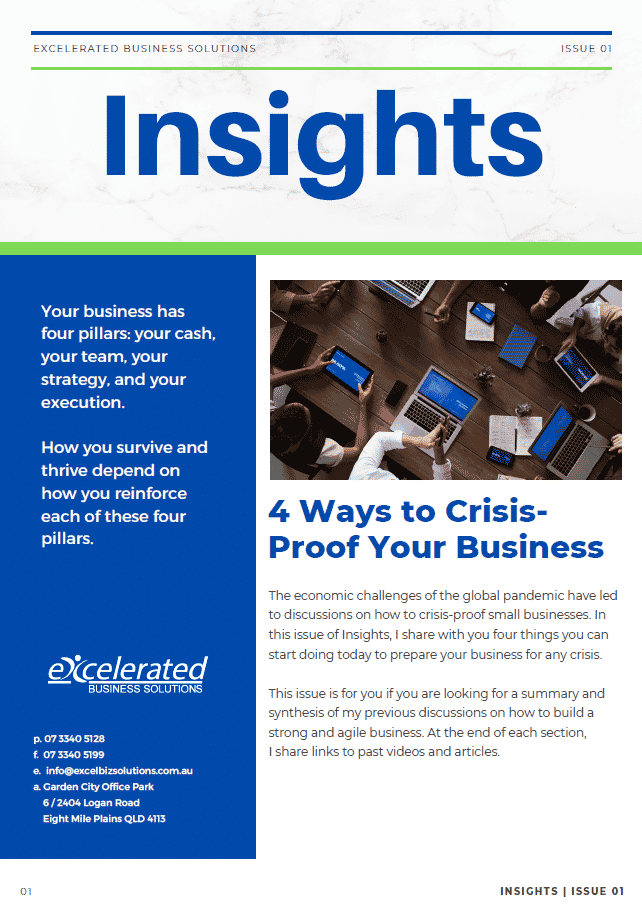Many small businesses risk closures because of their dependence on a handful of clients. The goal, then, is to widen your customer base. Marketing experts believe that introducing new products and services helps brands and companies penetrate new markets. In this two-part series, I will discuss several ways of doing this on how you can innovate and create new products and services for your customers.
In this first video of the series, I will discuss the first two: through the traditional product development process, and through product customisation and bespoke services.
In the information age, there are many ways to innovate and create new products for your customers. However, the traditional method of research first, building a prototype and then launching, is still a widely used product development methodology used by many businesses today.
Developing a new product through the traditional method
The traditional method is a straightforward way of creating a new product. It typically involves 5 steps, but I will discuss a 6th step that will help your business in the long run.
The first step is to research your idea. Your ideal product should be able to identify and resolve a pain point in your market.
The second step is to make or build and test your prototype. To test it, get feedback from your customers. How do they feel about it? Is it something that they’d like to purchase moving forward? Would they recommend it to others? How can you improve this new product or service to serve them better?
Once you gather enough feedback and have tweaked your product or service, you can proceed to the third step of writing a marketing strategy and plan. This plan will help you on the fourth step of launching your product to reach out to more customers. Keep reviewing your product; this is the necessary fifth step to ensure that your product or service continues to address your customer’s pain points.
The final step—the sixth step that will set you apart is to protect your idea. This means applying for patents or protecting any form of intellectual property. If you can’t patent your idea or it is something other organisations are already producing or doing, consider placing a high barrier to entry through customisation and personalisation that your customers find appealing. Doing so not only creates and nurtures a relationship with your customers, but it also provides another way of penetrating new markets by making things appear fresh and new.
Making things appear new through personalised products and services
Sometimes, what the market needs is not a new product, but a way to make their product distinctly their own. As consumers, we like things that we design, and we put a high value in things that we make. Marketing experts call this the co-creation of value. This has led to the personalisation and customisation of products and services.
Many brands are already in this bandwagon. Designer leather bag brands have been offering bespoke handbags to customers for decades. French brands such as Louis Vuitton, Longchamp, and Goyard provide their customers with options to personalise their leather bags. Bespoke Cycling, a cycling products retailer based in London, allows customers to build their own bikes online. Apple has a feature that allows you to build your own computer. If you think about it, many businesses are already offering bespoke services by offering choices, not just in product but also in services.
The word bespoke has become a marketing buzzword these days. Its origins as an adjective to mean commissioned comes from fashion, often referring to tailor-made suits and shoes—but in marketing, it refers to anything exclusive, as it means being made specifically for someone and extends not just to products but also to services.
For example, these days, there are many ways to fulfill an order. A wine and spirits retailer, for example, can offer many ways to deliver their products to their customers based on what’s convenient for their customers and what fits their lifestyles. Customers can call or order online for in-store pickup, curbside pickup, or home delivery. They can also buy in-store and have it delivered to their door. Customers can also opt for a subscription box that they can receive monthly, quarterly, or on their chosen frequency. Box subscribers can also specify what types of wine bottles they want in the box.
Not all businesses need not make the personalisation process complex. Personalisation is also about getting to know the customer and making sure that your product or service addresses their pain points. It can be as simple as smiling warmly and addressing them by their name during each touchpoint. This includes all face-to-face interactions and interactions online. If you send newsletters, make sure you address the recipients by their name. If you sell online, make sure that they can see their name on the cart when they sign in.
Small businesses put themselves at risk when they depend on only one or a handful of clients. To minimise this risk, the goal becomes increasing the customer base. You can do this by introducing new products and services in the market.
There are many ways to go about this, and this video discussed two ways that small businesses can use to develop new products and services:
- You may go through the traditional product development method of research-prototype-launch.
- You may also freshen things up by offering bespoke services or providing product customisation to your customers. The key in personalisation is getting to know your customers and their pain points so that you can offer them solutions to fit what they need.
Stay tuned for the next video, where I discuss how you can offer new products and services through crowdsourcing and crowdfunding.



